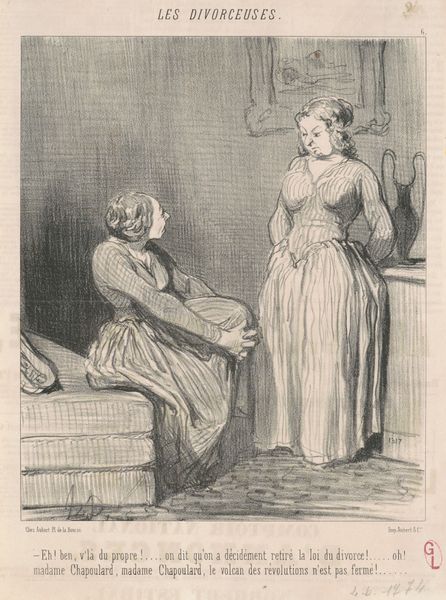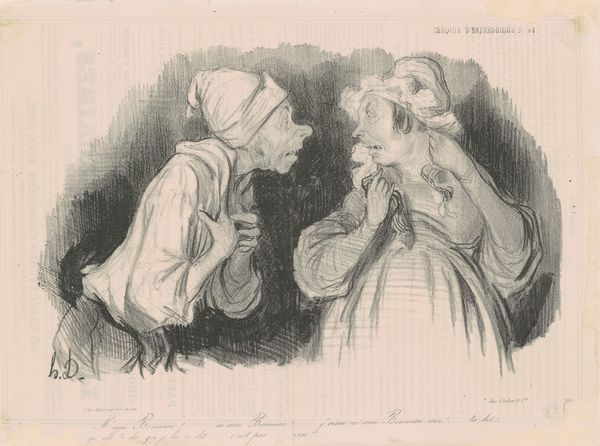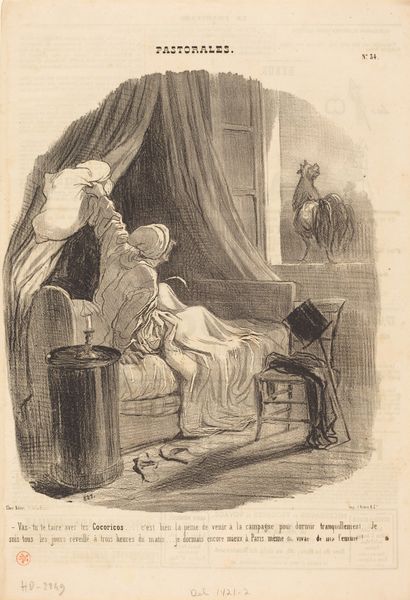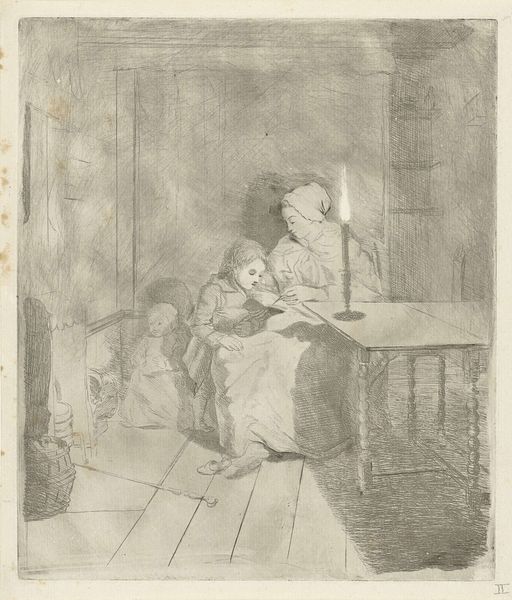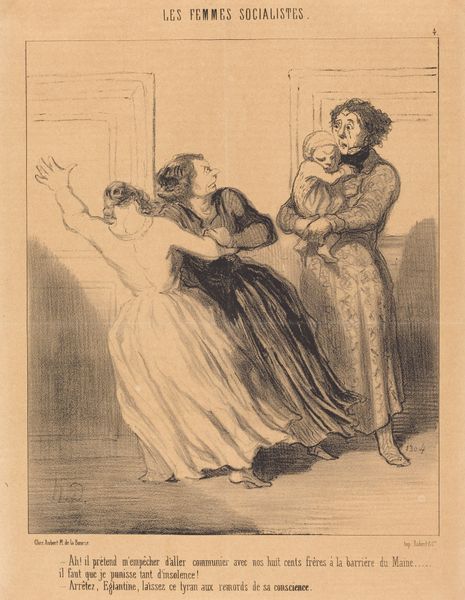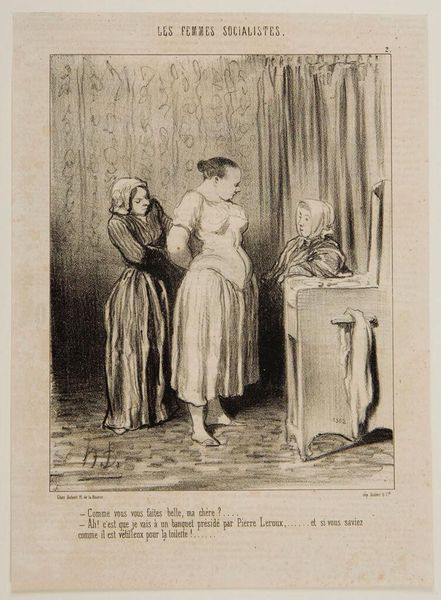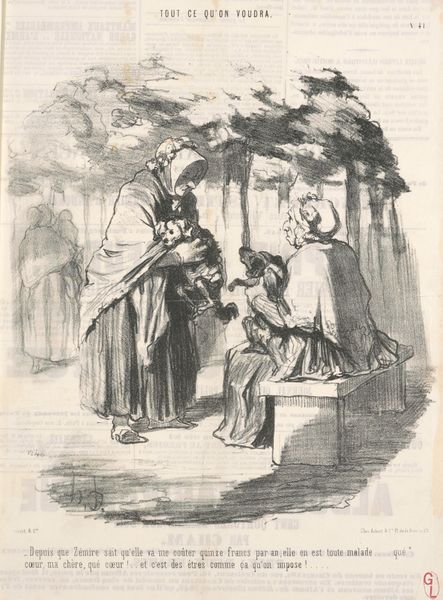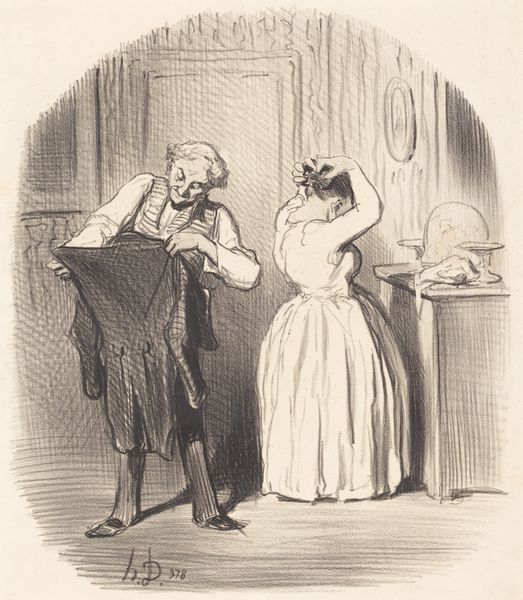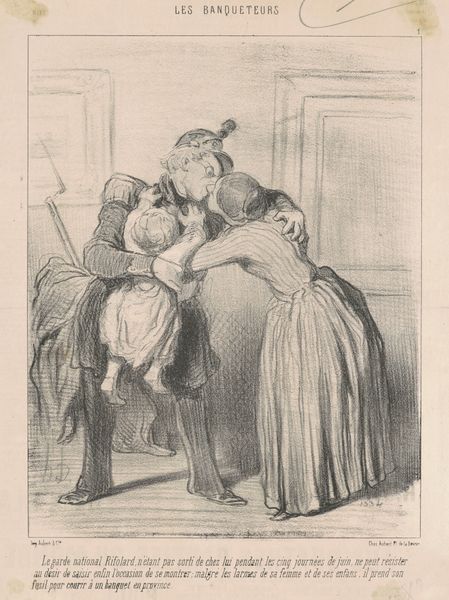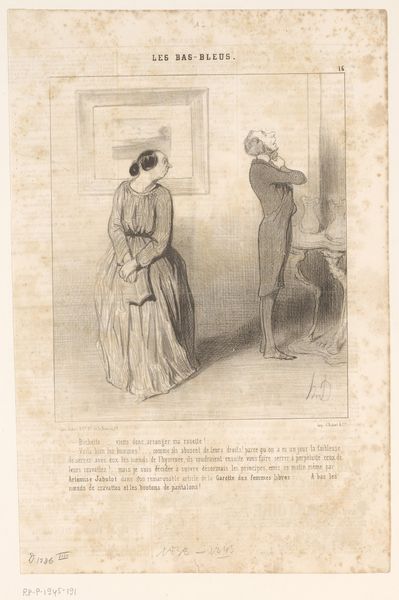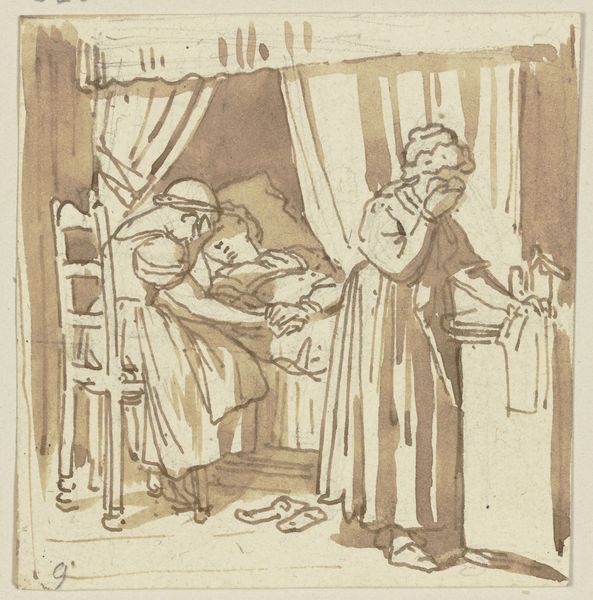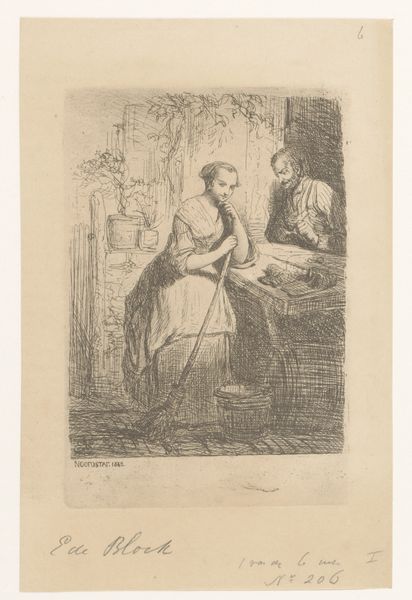
Inconvénient... des domestiques qui ont servi chez M. Duprez 1850
0:00
0:00
drawing, lithograph, print, paper
#
drawing
#
lithograph
# print
#
caricature
#
paper
#
pencil drawing
#
romanticism
#
genre-painting
Dimensions: sheet: 35.9 x 25.3 cm (14 1/8 x 9 15/16 in.)
Copyright: National Gallery of Art: CC0 1.0
Curator: This lithograph, “Inconvénient... des domestiques qui ont servi chez M. Duprez,” was created around 1850 by Honoré Daumier. It speaks volumes about the social anxieties of its time. Editor: My initial reaction? Loud! Visually, their exaggerated upward gazes and open mouths immediately convey a sense of unrestrained vocal projection. There’s something almost desperate in their pose. Curator: Precisely. Daumier often used his art to critique the bourgeoisie and their shifting social structures. The title suggests that the inconvenience arises from employing servants previously in the service of "M. Duprez," hinting at social climbing or the adoption of affected behaviors by the servant class. Editor: Interesting. Duprez, then, represents a standard or perhaps a spectacle of taste, to which these servants have been unduly exposed. I am drawn to their tilted heads and what they see, even though unseen to us. It reminds me how mimetic behaviors take root. Curator: That's insightful. It speaks to the anxieties around class mobility, with the servant's attempt to emulate bourgeois habits being presented as ridiculous. The act of singing itself, in this context, becomes a symbol of aspiration. It's crucial to recognize Daumier’s critique of bourgeois pretensions and the rigid class structures of 19th-century France. It underlines issues of cultural appropriation and class performance. Editor: Note how Daumier captures a very modern unease: that of maintaining distinct cultural codes that set people apart, establishing who's "in" and "out" within the same society. These images also reflect the ongoing human pursuit for transcendence, via cultural experiences or art, like song. I am struck, yet again, by art’s lasting commentary on how society continues to perform such displays to this very day. Curator: It’s precisely through unpacking those performances and their implications, their underlying narratives, that we can use this artwork as a lens to understand our own contemporary social landscape. Editor: Indeed. Daumier invites us to recognize these social dynamics, these visual and behavioral markers, echoed even in today’s pursuit for elevated states, by any means available to us.
Comments
No comments
Be the first to comment and join the conversation on the ultimate creative platform.

